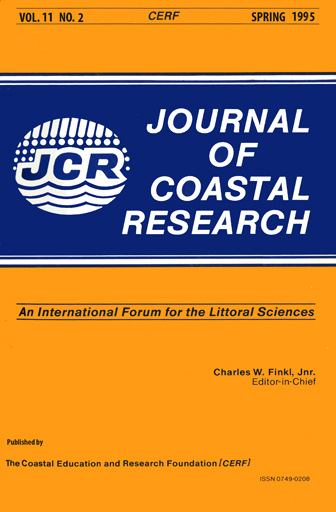Sediment Facies of an Embayed Coastal Sand Body, Pakiri, New Zealand
Keywords:
Nearshore, shelf, sand body, Hauraki Gulf, New Zealand, sand miningAbstract
A sedimentological investigation was conducted across the Pakiri-Mangawhai sand body located on the east coast of the Northland Peninsula, New Zealand. Nearshore, inner continental shelf and mid shelf depositional environments are recognised. The sand body extends seaward as a continuous accumulation of relatively mud-free unconsolidated sand from the landward extent of the coastal dunes to the 45 m isobath, approximately 4,500 m offshore, at the base of the inner shelf.
The Pakiri-Mangawhai sand body is characterised by a regular pattern of morphological components and associated sediment types. In profile, the nearshore displays a concave geometry that extends to approximately the 22 m isobath, 1,500 m or so offshore. The inner shelf displays a convex or irregular profile and extends seaward of the nearshore to a break of slope at the 45 m isobath, approximately 4,500 m offshore, where the mid shelf commences. Nearshore gradients range between 0.4° and 1.8°, inner shelf 0.1° to 0.6° and mid shelf 0° to 0.15°
Three subtidal sediment facies are recognised. Nearshore sediments comprise fine, very well sorted sands of 2 phi (0.25 mm) mean grain size. Inner shelf sediments grade offshore from medium to coarse sands (Mz = 0.0-0.5 phi, 0.71- 1.00 mm) with some very coarse sand and fine gravel present. In contrast, the sediments of the mid shelf in Pakiri Bay are very fine sands (Mz = 2.0-2.5 phi, 0.177-0.250 mm), with a relatively high mud content (5-10%). Carbonate skeletal debris, derived mostly from mollusca, comprises a significant proportion of inner and mid shelf sediments, increasing offshore from 0-5% across the nearshore to 30% at the base of the inner shelf.
The size-graded bed of the nearshore and inner shelf is consistent with diabathic sediment transport resulting in the preferential shorewards transport of the fine sand fraction of the sediments of the inner shelf. Shoaling gravity waves have the potential to disturb sediments to at least the base of the inner shelf, however, wind generated and other currents may also be significant.
Sediment exchange between the mid shelf and inner shelf is unlikely and the Pakiri-Mangawhai sand body is in effect a closed sediment system. Sand mined from the nearshore must result in a net loss of sediment from the sand body, and the sand resource should be considered finite.


